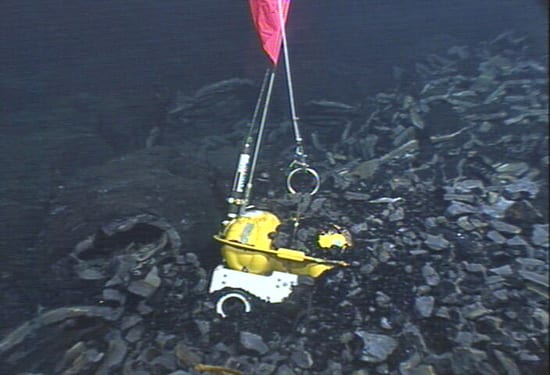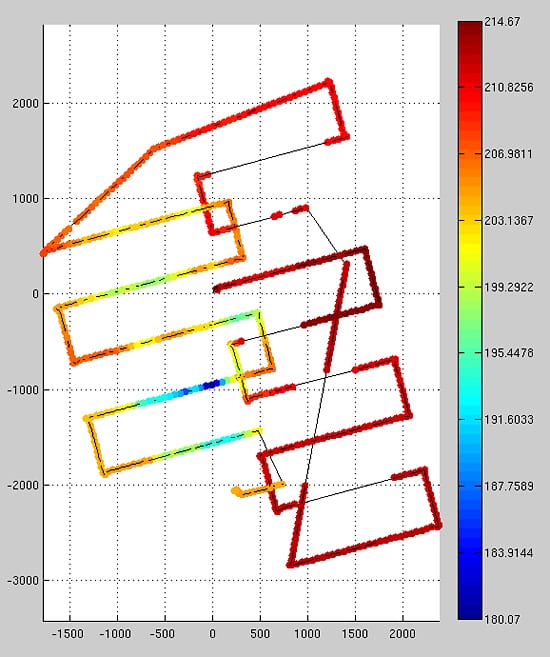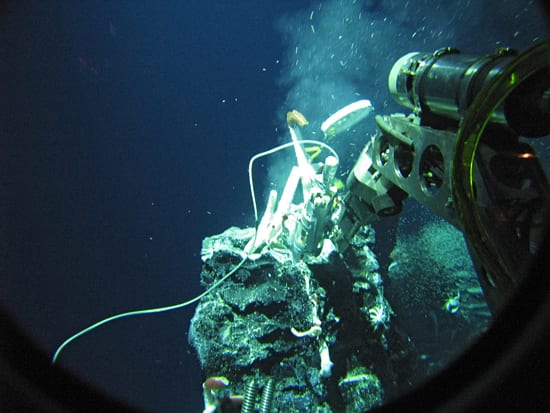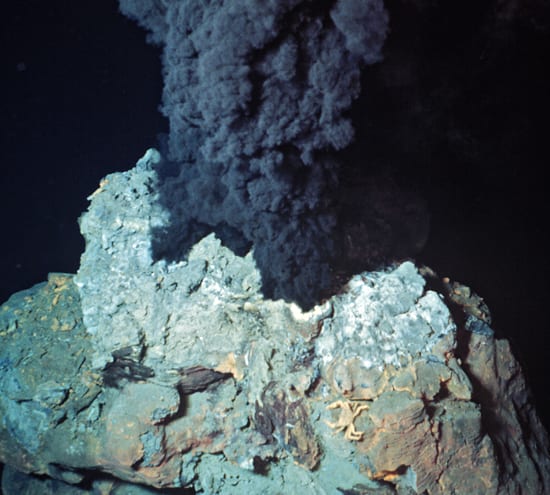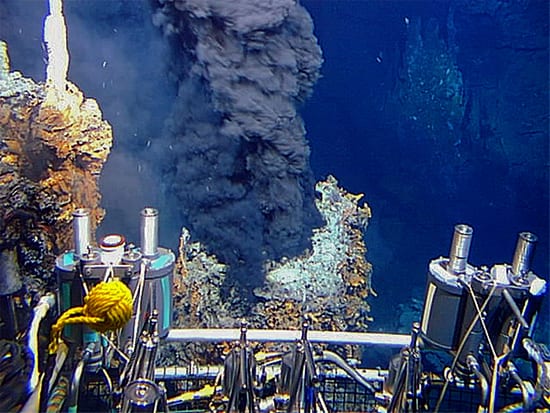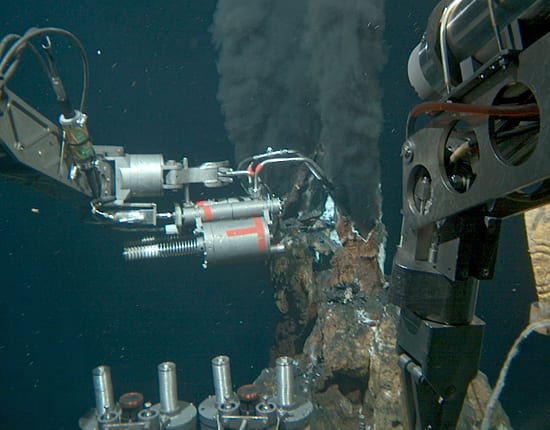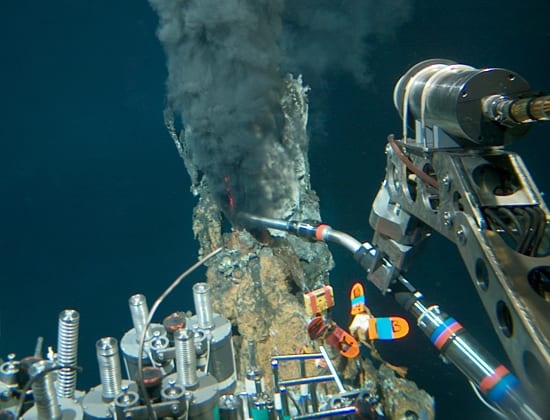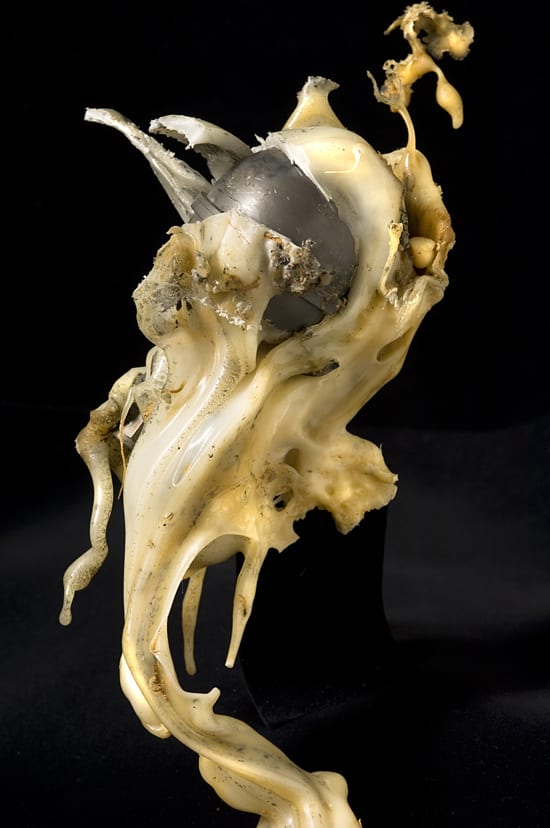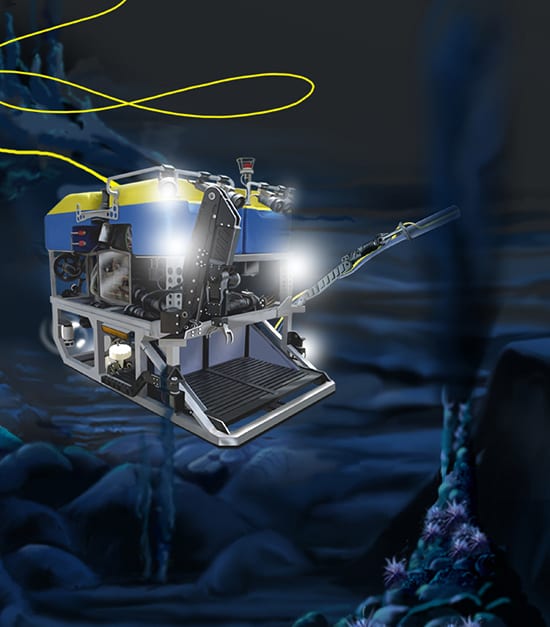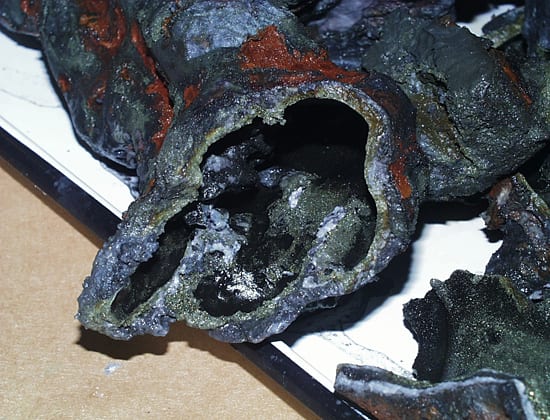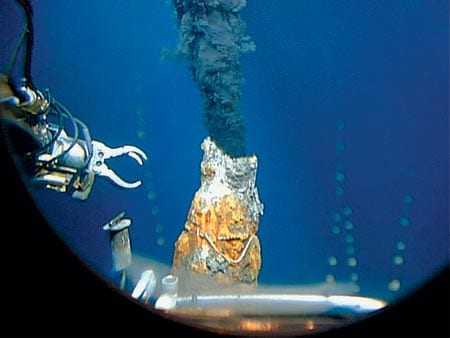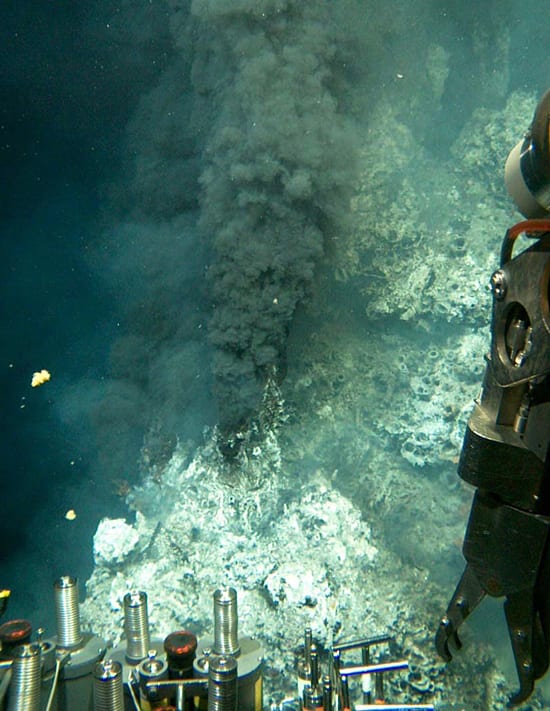- A lot of ocean science equipment goes into the water and never comes back. Some of it was intended to stay; other times, the sea claims it by force. Recently researchers used the WHOI-operated underwater vehicle Jason to take back some instruments that had been claimed by a seafloor volcanic eruption. In April 2007, scientists and technicians on the research vessel Atlantis returned to a patch of seafloor on the East Pacific Rise to find and rescue a trio of ocean-bottom seismometers that had been glued to the ocean bottom by erupting lava (Click here for video of the recovery). Scientists were particularly interested in getting the OBSs back because they may have recorded the moments when the undersea volcano erupted (Photo courtesy of the National Deep Submergence Facility, ROV Jason, Woods Hole Oceanographic Institution, and the National Science Foundation)
- The track of the hybrid remotely operated vehicle (HROV) Nereus is depicted here as it hunted for hydrothermal vents in the Cayman Trough in 2009. The green and blue dots denote strong evidence of hydrothermal fluids flowing up from the seafloor. Yellow, orange and red signify progressively weaker evidence of vent activity. During the preprogrammed part of the mission, shown by the tracks on the right, Nereus found few signs of hydrothermal vents. When it got a strong "hit" from the sensor, the scientific team re-tasked the vehicle using an acoustic communication link to execute a new set of tracklines shown on the left that centered on the suspected target. (Image courtesy of Chris German, Woods Hole Oceanographic Institution)
- At Crab Spa, a diffuse-flow hydrothermal vent site on the East Pacific Rise, Alvin’s manipulator arm holds a sensor developed by Nadine Le Bris that measures temperature, pH, and sulfide in situ. WHOI microbial ecologist Stefan Sievert and colleagues are using the site to gain insights into chemosynthetic processes at deep-sea vents. With Ramunas Stepanauskas, the group recently obtained single microbial cells directly from the environment and are sequencing the DNA of the abundant, yet little-known microbes to get information on their physiology and metabolic potential. (Photo courtesy of Stefan Sievert, Woods Hole Oceanographic Institution)
- A black smoker chimney releases hot hydrothermal vent fluid filled with mineral particles that make it look like smoke. Diving in Alvin in 1993, scientists Holger Jannasch and Cindy Van Dover found this black smoker on a vent site called "Snake Pit" on the Mid-Atlantic Ridge. This image is one of the twelve featured in the 2011 WHOI wall calendar now available online. (Image courtesy of Woods Hole Oceanographic Institution Archives)
- Researchers inside the submersible Alvin watch a black smoker chimney erupt from seafloor vents. Hot hydrothermal fluids surge through the chimneys at velocities of 1 to 5 meters per second. The "black smoke" consists of an abundance of dark, fine-grained, suspended particles that precipitate when the hot fluid mixes with cold seawater. (Photo courtesy of Woods Hole Oceanographic Institution Archives)
- Seafloor hydrothermal vents spew hot fluids filled with minerals, including iron. To their surprise, scientists discovered that some of the iron does not get oxidized when it hits oxygen-rich seawater, but instead remains in a form that organisms can use. (Photo courtesy of Woods Hole Oceanographic Institution)
- A mechanical arm on the Alvin submersible reaches out for a sample from a "black smoker" hydrothermal vent along the East Pacific Rise. Black smokers are so named because they can appear as if dark smoke is billowing from them. In fact, the “smoke” is actually iron- and sulfur-rich minerals precipitating from scalding vent waters—as hot as 760°F—meet the icy cold depths. (Photo courtesy of Woods Hole Oceanographic Institution Archives)
- This fluid temperature logger got a little too close to a hydrothermal vent and melted; or better to say, the vent got too close to the logger. Deployed in November 2006 at the "Pvent" site along the East Pacific Rise (near 9º 50' N), the logger was placed to take the temperature (every 15 minutes) of the fluids venting from the seafloor. When researchers (led by Karen Von Damm of the University of New Hampshire) returned a year later, they found that the ultra-high molecular weight polyurethane cover (white) had melted when the logger was caught in a change in the superhot flow. (Photo by Tom Kleindinst, Woods Hole Oceanographic Institution)
- WHOI postdoctoral fellow Chip Breier is working to put a new deep-sea particle sampling device on the remotely operated vehicle Jason to collect samples in hard-to-access places. For example, the vehicle can use its manipulator arm to thrust a particle-collecting vacuum tube right into rising hydrothermal vent plumes, where emerging vent fluids mix with seawater and a flurry of intriguing chemical reactions take place. (Illustration by E. Paul Oberlander, Woods Hole Oceanographic Institution)
- A rock sample, collected from the Central Indian Ridge, a mountain chain running through the Indian Ocean, sparkles with information. It's channel is lined with a fine-grained mineral called chalcopyrite as well as a white mineral called anhydrite. Researchers on board the research vessel Knorr took the sample in 2001 from a black smoker chimney, one of many structures that can form at high-temperature, seafloor hydrothermal systems. Scientists study them to learn about tectonic processes, and they are of increasing commercial interest for their production of minerals. (Photo by Amy Nevala, Woods Hole Oceanographic Institution)
- The submersible Alvin's manipulator reaches toward a black smoker chimney at 17°S on the East Pacific Rise. The "black smoke" consists of an abundance of dark, fine-grained, suspended particles that precipitate when the hot fluid mixes with cold seawater. (Photo by Meg Tivey, Woods Hole Oceanographic Institution)
- A chimney-like structure called a black smoker on the East Pacific Rise at 9°N spews water superheated to more than 600°F. The sample basket and a manipulator arm on the submersible Alvin are visible in the foreground. (Woods Hole Oceanographic Institution)
SEARCH RELATED TOPICS: Hydrothermal Vents
Image and Visual Licensing
WHOI copyright digital assets (stills and video) contained on this website can be licensed for non-commercial use upon request and approval. Please contact WHOI Digital Assets at images@whoi.edu or (508) 289-2647.
